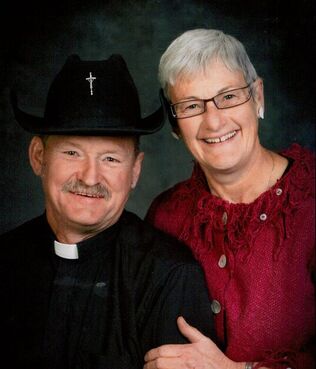 Deacon Larry & Theresa Driver Deacon Larry & Theresa Driver Despite some tough health issues and challenges in recent years, Deacon Larry Driver has survived through the power of prayer. In the fall of 2008, he went in to get an annual physical for his driver’s licence and the doctor noticed he had a large lump on the left side of his throat. It turned out to be Stage 4 melanoma cancer in his lymph nodes on his neck. But that was the primary. After an appointment in the cancer clinic, it was discovered cancer on his left tonsil. After surgery, he had both chemotherapy and radiation treatments. Today, he describes himself as being “pretty healthy.” Although he’s a Type 2 Diabetic and taking some medication, but from a cancer point of view he’s clear. Faith is what he carried him through the ordeal. “I learned what prayer is all about at that point. Over the time, I had people praying all over the world for me to get better and to know that if you need help you ask people to pray for you . . . You need people to pray - to speak to the good Lord. The more people you’ve got praying for you the better your chances are of getting help. Not that He doesn’t help you but it’s the intercessions that we go to Mary and Joseph and the saints for. The more people you’ve got working for you the better it is,” says Driver. Driver, who turns 70 in October, started the program in 2001 to become a Deacon in the Calgary Diocese. He was ordained on June 14, 2004. Driver was attending St. Mark’s in Calgary where he saw Deacon Amadeo served as a deacon. ”It struck me as interesting that he was able to work there.” Closer to 2000, Larry asked Bishop Henry about the permanent diaconate. Bishop Henry recalled this particular conversation with Driver. “Shortly after my arrival in the diocese, and upon meeting Larry, his first question to me was “What do you think about the permanent diaconate?” My reply was “I’m definitely in favour of it.” He was the first to raise the issue with me in the diocese. His question was actually repeated by others many times in the first six months.” 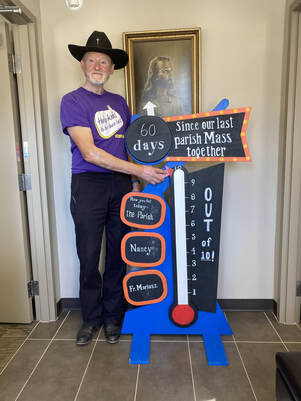 Deacon Larry at St. Francis de Sales Parish Deacon Larry at St. Francis de Sales Parish Driver has been a Deacon from the beginning at St. Francis de Sales in High River. “I’ve been fortunate enough that the Bishops have left me in this parish so far for my Diaconate service,” he says. Driver is originally from the Grande Prairie area. After graduating from the Grande Prairie Composite High School, he had jobs in labour, trucking and warehousing until 1975 then he was hired on by the City of Calgary’s Emergency Medical Services Department and moved to Calgary in July 1975. “The City trained me as a paramedic at SAIT and I graduated as a paramedic with honours from the class and then I worked for the City until 1978. I moved back to Grande Prairie but that didn’t work out. So I came back to Calgary, was rehired and finished up my 32-year career with the City of Calgary,” says Driver, who retired in July 2007. Being a Deacon fits in with his career being a paramedic. “You’re there. You’re helping people. I could see that. But I also saw it as a faith journey to increase my faith and help others through that journey of faith,” says Driver, who has had an interesting personal journey of faith. He was raised Anglican but over time he found the Roman Catholic faith more to his liking and he became a Catholic in the late 1980s with the help of Father Cooney, who eventually became a Bishop. Driver has two daughters who both have two children - three boys and a girl. The family has played an important role in his success in becoming a Deacon as well as in his battle against cancer. “My wife has been a super support through all of this and as much as she’s not on the altar she’s definitely been the one that has supported me the most in this,” says Driver. Therese says it was only natural for her to support her husband on his journey to becoming a Deacon. “If that’s what they want and feel called to do, who am I to stop them and if I don’t support them they can’t go on,” she says. “He felt the calling and was prepared to do what had to be done. It certainly didn’t harm me at all. It certainly gives me an understanding of what’s expected, of what the ministry is and it affects the family. You have to know that ahead of time. It does have an impact on the family and everything you do.” Through Larry’s health challenges, the power of prayer became very important, adds Therese. “To trust in God. If it’s meant to be it will happen, if it’s not then that will happen too. We trust in God and do the best we can and let God work the way He works. It’s God’s work one way or the other and we were prepared either way. If you’re going to survive this, great, if not then we’ll deal with it. So were our kids. They were all on board and you do what you have to. I grew up in hard times and you just do what you have to. That’s all there is to it.”
0 Comments
“Infinitely wiser would it be to urge young people to give to the Lord, in a legionary membership, the first fruits of [their] free time. Those first fruits will inspire the whole life and keep the heart, and face too, serene and young. And there is still left an abundance of time for recreation, doubly enjoyed because doubly earned.” (The Official Handbook of the Legion of Mary, pg. 186) These words, taken from the Legion of Mary handbook, were the words of the first spiritual reading that the new members of the St. Francis Xavier Chaplaincy (SFXC) Mater Misericordiae praesidium heard at their first meeting, in mid-November of 2020. The Legion of Mary is a lay apostolic organization founded in 1921 in Dublin, Ireland, by the Servant of God Frank Duff. The Legion apostolate focuses on bringing souls to Christ through His Mother Mary, by means of evangelization and the spiritual works of mercy. Taking its name and structure from the Roman Legion, the Legion of Mary seeks to emulate its discipline, loyalty, and sense of duty. Since its inception, the Legion has spread to over 170 countries, with over a million members serving souls all over the world. In our diocese of Calgary, there are about 24 praesidia (the name for groups of the Legion, normally attached to a parish) under the Queen of the Most Holy Rosary Curia (the higher body of the Legion overseeing all praesidia in our diocese). The praesidium of the St. Francis Xavier Chaplaincy, formally established in April 2021, is the newest among these praesidia, taking the name of Mater Misericordiae (Latin for Mother of Mercy). A Legion of Mary praesidium for young adults and university students was in the works prior to the pandemic and, after much work, online meetings began in November 2020 with the help of two experienced legionaries from the Curia. For nearly eight months, the faithful members of Mater Misericordiae praesidium met over Zoom every Saturday morning until mid-July, when they were finally able to meet in person. The weekly meeting of the praesidium consists of praying the Legion prayers (known as the Tessera) together, giving reports on the work members have been assigned, and discussing sections of the Legion of Mary handbook. Members also hear an allocutio, an address given by our Spiritual Director, Fr. Cristino Bouvette, to help motivate the members in their apostolic work and help them better understand the Legion handbook. The assignments that members receive each week are geared towards evangelization and outreach, with the ultimate goal of bringing souls closer to Christ through the Blessed Virgin Mary. Due to the pandemic, assignments were primarily virtual and limited to helping family and friends grow in the faith, or speaking to someone who was lonely or isolated. Members report on their assignments each week, enabling members to help each other with their works and keep them accountable. This special bond between members is seen through the use of the terms “brother” and “sister” to refer to each other, indicative of the Legion as a family. The legionaries of Mater Misericordiae praesidium have experienced a great deal of spiritual a growth as a result of Legion involvement. Among many things, members have expressed growth in their relationship with Our Lady, and a deeper realization of Christ’s call to holiness and mission. Above all, being able to grow in these things alongside others has been one of the greatest blessings for them. Under the auspices of Mary and the spiritual guidance of Fr. Cristino Bouvette, the SFXC Mater Misericordiae praesidium continues to grow, with about eleven active members and a growing number of auxiliary members (members who pray for the Legion). The legionaries of Mater Misericordiae hope to continue to spread devotion to the Blessed Mother, especially amongst young people, and inspire them to serve others in complete union with her.
“So, what do you want to be when you grow up?” If you had any kind of typical childhood, you’ve heard this question more times than you can count. For me, I normally had an answer. Princess, chef, interior designer, and – when asked in my university years – an investment banker or finance prof. The last thing I could have imagined I’d answer some day is, “Religious sister.” 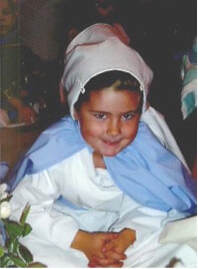 Mary dressed as the Blessed Mother for All Saints’ Day in kindergarten Mary dressed as the Blessed Mother for All Saints’ Day in kindergarten The Catholic faith that I was raised with became my own while I was a student at Mount Royal University. An organization called Catholic Christian Outreach (CCO) re-introduced me to the person of Jesus and proposed that the faith was something relevant for me as I moved into adulthood. The CCO students I met had genuine joy which flowed from their relationship with Jesus, and I knew that I wanted what they had. I made a decision that I would centre my life around Him going forward. I was still excited to focus on what I “wanted to be,” but this time, I saw my career as an opportunity to witness in the secular world and bring others to God. Sounds pretty good, right? I didn’t think I had any reason to question my plans. There was only one thing: I never thought to ask Him about them. When I was in my third year of university, I did something I’d never done before. I asked the Lord in prayer, “How do You see me?” His response? “Sister of Life.” My first reaction went something like, “Uh oh.” I knew that consecrated religious were a “thing” in the Church, but it was something that other people did – never something I imagined or thought of for myself! I did what seemed to be the smartest move in that situation…I tried my very hardest to push the idea out of my mind. Thankfully, God plays the long game with us. He didn’t let me get off the hook and sometimes reminded me of that time of prayer, but He respected my freedom and waited while I continued to plug ahead at my plans. It took going on a mission trip to New York City in 2019 to get my attention. While staying and working with the Franciscan Friars of the Renewal (CFRs), I recognized true joy. The men of this community had renounced everything the world places on a pedestal – success, money, the ability to do whatever they wanted – and yet, they were free. I thought to myself for the first time, “Maybe, just maybe, what God wants for me could make me happy.” If I’m being honest, though, I needed some help to figure this out. Just like kids go to their parents for guidance as they decide what to do with their lives, I turned to my Mother, the Church. The Church has guided me the last couple years in almost every way possible. Through the sacraments, amazing spiritual parents, and an awesome community of other young Catholics, I’ve been able to draw closer to the Lord and gain more confidence in His call. I’ve also had the opportunity to live at the inaugural St. Francis Xavier Chaplaincy (SFXC) Women’s House. Here, several young women and I stayed with the Seeds of the Word Sisters at their home in SW Calgary and had the gift of being able to participate in elements of their prayer and community life. These experiences helped to debunk some of the misconceptions I had about religious life and filled me with joy at the possibility of being totally His. All of these things have led me to my next step in following the Lord’s call…entrance to the Sisters of Life in New York this September! In responding to God’s plan for my life, I have recognized the truth of these words from Thomas Merton: Vocation does not come from a voice out there calling me to be something I am not. It comes from a voice in here calling me to be the person I was born to be, to fulfill the original selfhood given me at birth by God." I am thankful to the Church for being a good Mother to me. In an age where we’re told we can do and be whatever we want, She has helped me to discover not merely “what I want to be,” but far more importantly, who God made me to be.
These are words that come to mind when I reflect on my experience of Catholic Education in Brooks. My husband and I didn’t know what to expect coming here with two young children in tow 20 years ago, but this place has a way of grabbing hold, seeping into your heart and not letting go; it has a way of becoming home. There are many people who have influenced my development as a Catholic educator: administrators who recognized my potential and encouraged me to have faith in my ability; colleagues who were, and are, my greatest role models; and students, who taught me more about life and faith than I could ever teach them and whose experiences showed me what courage really is. What I value most about St Joseph’s Collegiate. is threefold. It’s the people. It’s the presence of the Holy Spirit working on hearts and changing people. It’s a true desire to be “a community, rooted in faith, seeking excellence for all”. It’s a family. I’d like to share story of a young man I’ll call Cas* who came to St. Joseph's for only one year. He had a great smile, and he loved basketball. He was respectful and attentive but wasn’t achieving very well. One day, Cas approached me and asked for help. He described his life at home with no rules; he could do what he wanted, when he wanted - and he did. Although this might sound great, Cas wasn’t happy. He needed parameters. Together, that day, we created some expectations: he would work in my classroom every day after school, and most importantly, he would call me every night at 10 pm to let me know that he was home. That’s all he needed - someone to care enough to set some boundaries. Cas’ grades and self-esteem improved drastically, and somewhere along the line, he started calling me “mom”. This young man left an indelible mark on my heart and this experience, to me, encapsulates how I feel about Catholic education. We don’t know the impact we have on students - a kind word, a listening ear, an open door. What an incredible responsibility and an incredible privilege! I feel deep gratitude for my time in Brooks - to be part of all the amazing graduation celebrations and to witness the growth of our school into a vibrant and diverse community. God calls people here for a reason, and I know I was called to be in this place at this time. Leading a school during a pandemic is one of the most difficult things I have ever done, and it has challenged me to the core. But I am able to appreciate my freedom, my family, my upbringing, and my faith even more. I am thankful that God trusted me to do His work. What an incredible blessing! As I move on from this amazing community, I know that the Holy Spirit will continue to be present here, and with that knowledge, there will be many more blessings, more challenges, more gratitude, and more growth. Thank you, Lord, for this incredible gift. *not his real name
I was born into a faithful farm family who attended church regularly. My sister and I were among the little people who flocked to Sunday School and ran around the church basement while our parents served coffee and visited with other members of the congregation. It was with sincere devotion that I was baptized as an infant and confirmed by my own choice as an adult in the United Church. My journey continued in the United Church when I was married, and my husband and I welcomed two beautiful children into our family. We were living in Edmonton and I was teaching at a public school when my husband received the news that he was being transferred to work in Calgary. Shortly after arriving there, we needed to look at schools for the children. As a teacher, I started to research the schools in the area and found myself drawn to the Calgary Catholic Board. My husband was baptized Catholic and so we enrolled in the neighbourhood Catholic School. I was thrilled with the education my children received and even more excited about the learning they were doing in regard to faith. They came home with stories about their lessons and asked questions about what they were learning. The more they asked, the more I thought about my responses and I was not satisfied. I attended liturgies at school and asked questions of my husband but felt like I needed more in order to support my children on this path that I had chosen for them. Soon, I found myself in the office at St. Albert the Great Parish and enrolled in the RCIA program. “Information is what I need”. “It is for the children”. “I am happy with my faith and the United Church”. These were the lines that I was telling myself and they were what got me started; my feet in the door I guess you could say. As we hear so often, “God works in mysterious ways”. The more I learned at RCIA, and the more I volunteered at the school, the more invested I became. Wednesday nights became the best night of the week as I joined my sponsor and delved deeper into the faith. RCIA allowed me to grow and expand on the faith that had been fostered in me as a child. As an adult, I am acutely aware of the fact that I had an opportunity to look at faith in a new way and to choose it for myself (with the guidance of the Holy Spirit and many other faithful companions). Now, as a Catholic school teacher, I am blessed daily to learn and grow in faith alongside my students. It is with humble appreciation that I embrace each day of learning that will last a lifetime and beyond.
Interview and transcription: Solomon Ip.
Photos courtesy of L. O'Hara & Solomon Ip. 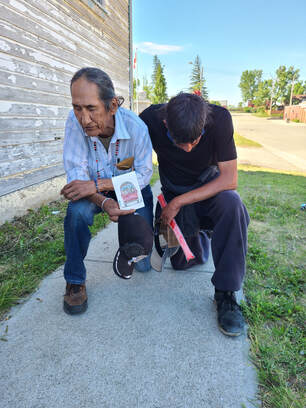 Patrick Crowchild, TSUUT'INA Elder, member of Franciscan and Friends Ministry, prayed for street people in Siksika who struggle with addiction. Patrick Crowchild, TSUUT'INA Elder, member of Franciscan and Friends Ministry, prayed for street people in Siksika who struggle with addiction. “We’re not Bible thumpers. Our job is to love, not judge,” said Denis Grady about Franciscan and Friends, a southern-Alberta mission team founded by Grady in 2002 who are currently working to support initiatives for Indigenous people within and outside of the church in southern Alberta. When I caught up with Grady, he and a photographer friend were in Lethbridge, shooting promotional photos for their friend’s Indian Relay. He talked about how this was something that wanted to help with. The plan is to take photos of the young men on horseback, dressed in regalia to make promotional materials. The Indian Relay is to give young aboriginal men something athletic to do that also connects them to their culture, which is just one of the things Grady and his team have lent support to in recent years. “Francisan and Friends is part of imparting the love of Christ to a hurting world,” said Grady. It is taking the words attributed to St. Francis, “preach the Gospel at all times, and if necessary, use words,” and building on them with actions, he said. After spending time on missions to the Caribbean, where they were invited for many years to visit prisons, schools and churches, Calgary-based Grady and his team have turned their attention closer to home. Many of us are now more familiar with the issues that Indigenous people are facing because of the uncovering of unmarked graves at former residential school sites across Canada. It filled my heart with sorrow to read and learn more about Residential Schools these past few months, but as my older children began to ask questions about what they heard on the news, I felt it was my duty to educate myself and them as soon as possible. “It is on all of us to educate ourselves and learn the history of indigenous people in our country,” said Grady, who has heard from his indigenous friends firsthand what their experiences were at residential school. Now that we have the knowledge, the question of what to do is on many of our minds. “I want to help,” I recently wrote to a friend, “If there was something I could get behind, I’d do it in a heartbeat.” This is why I was happy to be connected with Franciscan and Friends. Someone has to do the actual work of reconciliation, and organizations like this might just be a tangible way we can continue that work. Grady was invited in 2015 by Sr. Rita Kim, Coordinator of the Diocesan Mission Council to liaise with Indigenous people and parishes in the Diocese of Calgary. He connected with Fr. Long Vu, parish priest at Holy Trinity on the Siksika First Nation in Cluny, and Fr. Roy Jayamaha, parish priest on the Piikani First Nation in Brocket, Alberta. For the past year, he and several of his team have been part of the St. Kateri Fellowship, a celebration of art, live music, and recovery. “It is made up of people who’ve found sobriety through faith,” he said. This month, Grady and a network of 30 to 40 volunteers will hold a First Nations Music camp, which last year was a great success. 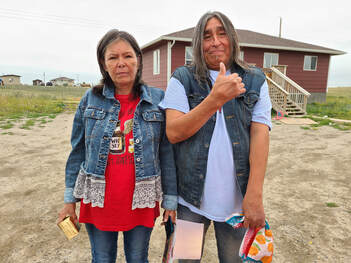 Alden & Leita Sunwalk, Siksika Nation, members of the First Nations Music Project Alden & Leita Sunwalk, Siksika Nation, members of the First Nations Music Project “We had a woman come with crafts for kids, and it was amazing – they were putting their phones down and doing art work,” he said, noting that engaging people in doing things, whether it is making music or creating art is part of the ministry along with simply fostering community. It is through community and connection that Franciscan and Friends does its work. I grew up in a community adjacent to a Reserve. I attended a Catholic school side-by-side with Indigenous students. At school we learned about their traditions, with beautiful jingle dancers, drums, dance, their traditional foods, beadwork and legends. We became friends. During that time though, I did not learn anything about residential schools. I was enthralled for a time with these beautiful girls in my class and their funny and interesting ways. But as I grew up, there was a separation that occurred. I couldn’t say it was blatant racism, but I can identify the thoughts and actions of people around me as a barrier. It was like being stuck on one side of a fence, while indigenous friends and neighbours were on the other. I don’t feel entirely innocent in this matter, and the more I read and learn, the more I realize how ignorant I have allowed myself to be. When I grew up, I had several sad encounters – in one instance, being directly accused of racism that I never felt, but perhaps because I was unaware of my privilege as a non-minority, fell into the trap of being desensitized to the struggle that exists for Indigenous friends today. I eventually learned about residential schools and the involvement of the Church I called home. I will admit though that I filed it away as “a long time ago.” Now I feel like I’ve awakened to a nightmare. I regret my willful ignorance. I regret the times that I could have held out my hands in friendship but did not. All of these memories resurfaced while in conversation with Grady, who said, “if you want to keep being at war, keep your distance,” adding that at first, he had a bit of anxiety about visiting the reserves, but now he looks forward to it because of relationships. “I’m going there to see my friends, and know we’re going to make music and laugh together.” Growing up, I remember a few well-meaning people complaining that it was impossible to work on the reserve because “the people don’t trust us.” Now that I am an adult, I know why a person might be met with distrust. I wouldn’t have trusted my past self with the attitudes and beliefs that I held. This history of well-meaning people trying to offer help is stained by a history of oppression of Indigenous people. I asked Grady if building trust is something he struggled with. When he first began trying to lend support, he said that there was a question of sincerity. “One person at a time,” Grady said, they have made friends and have simply supported people in doing good. From what I have gathered in talking with Grady, it is about being authentic, and not having an agenda. “It’s time to mix,” he said, referring to the separation and the “us and them” mentality, “and to not sabotage (efforts to do good).” “When we began, it was basically about setting the stage and hoping people would come. And people came,” he said, referring to all of their partnerships; the St. Kateri Fellowship groups on the Siksika and Piikani nations, the First Nations Music Camps at Rafter Six ranch in Cowley, AB; to an upcoming art show; and to Friday Nights at the Bovies in the Bullhead Hall, Tsuut'ina. For one event, “we brought down a bunch of harmonicas and gave lessons, and discovered some talented people to make music with.” In Brocket, a Catholic Indigenous friend pointed out to Grady that there is a shrine to Our Lady built by the Oblates over 75 years ago, which the community has devoted time and energy to restoring “with the vision and inspiration to restore processions and the Rosary.” “The faith of Indigenous people is varied,” said Grady, meaning that “there are devout Catholics who love the Eucharist and the Rosary, and those who practice in traditional ways, calling on the Creator and using the medicine wheel,” but for Franciscan and Friends, that doesn’t present a problem. “It’s about being open,” he said. He’s not just talking about being open to people, but being open to the Holy Spirit. For him, a big part of that is providence and seeing God work through their efforts. The core group of Franciscan and Friends prays the Rosary together and “lives a sacramental life.” Living by providence means that they don’t worry about some things, “we allow God to take care of it,” he said, giving an example of when they were to put on a Christmas dinner for single mothers in the Siksika. “We had someone donate twenty turkeys, but then were faced with how we would cook them. Then along comes someone who had a bakery and it turns out that they could cook forty turkeys.” Grady is humble when he talks about the work of his ministry. He attributes the good things to the Holy Spirit, and to the people of the First Nations within our Church and outside of it. Helping hands, community, music and initiatives that uplift indigenous communities will continue to grow if we can leave agendas at home, admit our ignorance, educate ourselves and just hold out our hands in friendship.
As we were adjusting to the difficulties of the past eighteen months something more ominous and seemingly out of nowhere, punched us in the gut as members of the Canadian Catholic Church. Ground penetrating radar studies around abandoned Indian Residential Schools had found grave sites, first at Kamloops. Common immediate responses I heard among my fellow parishioners were feelings of puzzlement, shock, and anger and expressions of general ignorance of the issue. Here was our Church, standing shamed before the Canadian public and the world, as the continuing pain and suffering of indigenous people stood revealed. We are now challenged by these events to examine our own, and our Church’s, position in society. We might be ‘settlers’ of recent or many generations’ standing. Some of us are indigenous, and for many, perhaps most, our backgrounds are complicated. Whatever our situation we can no longer ignore questions this poses about our faith, Church, and our pasts. I had attended the Calgary hearings of the Truth and Reconciliation Commission (TRC) in November 2013. I had witnessed the grueling and painful testimonies of those affected by the Residential Schools and its related intergenerational trauma, and I had stood in the lunch line listening to Commission Chair Murray Sinclair, whom I greatly admired. I have done post-graduate studies in the fields of imperial and colonial history and I had read some of the final reports published by the TRC. Still, the news out of Kamloops, and the eruption of emotion that followed came as a shock. Partly it was the way the reports came out. I had understood the events to be historical and not as enduring injustices needing resolution. My first visit to the church of Holy Trinity on the Siksika Nation was in July when I met with the pastor, Fr. Long Vu, to discuss what historical records Holy Trinity had that were related to the community, and to let him know what was held by the Diocese. We have no Residential School records as the Diocese was not involved in operating the schools, but we were keen to know if there was anything which we could share that would fill in gaps in the existing information. Seeing the Nation for the first time reveals the stark beauty of the grasslands and the dramatic sweep of the Bow River valley as it meanders through its wide plain. I was pleased to be back again this week to attend a meeting of Bishop McGrattan and Chief Ouray Crowfoot with Council members and a diocesan team to see if we could establish some concrete ways of moving forward together. It was a good meeting. What struck me most was the graciousness and patience of the Siksika representatives, their quiet humour and commitment to get things done on the journey towards healing. Looking out over the river valley where Treaty Seven was signed almost 150 years ago it is easy to imagine the gatherings that occurred there, and to feel the tangible presence of history. A mile or so distant, Crowfoot Residential School site, which is overlooked now by Holy Trinity Church, was demolished some years ago though its outline and footprint can still be seen. It has its own historical presence which asks to be acknowledged. Inside the Blackfoot Crossing Historical Park there is so much to see and I would recommend you visit. What seemed to me most poignant was the space being created for the historical artifacts that once belonged to Chief Crowfoot (1930-1890), an original signatory of the Treaty, which are currently awaiting repatriation from a museum in Exeter in the United Kingdom. This is a sign of hope for the Nation – and of the erosion of the old power of colonialism. Over these places, and in all of us who met together, I felt the spirit of God asking us to stay with the suffering and to work hard together and attempt to mitigate the ill effects of the Residential Schools. We cannot change history but here is an invitation we cannot ignore. We can seek the truths and lessons of our history by studying reliable authorities, records, the oral testimonies of elders and through honest, prayerful reflection. We are obliged by our God to do so. The past is not past – it is with us. But God is with us too.
|
Author
Catholic Pastoral Centre Staff and Guest Writers Archives
July 2024
Categories
All
|
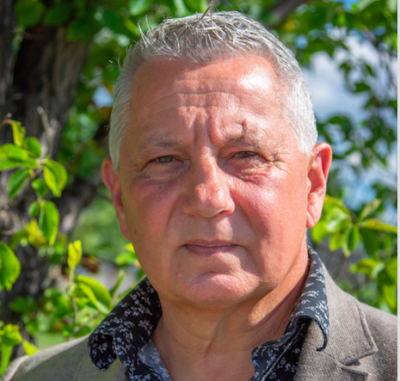
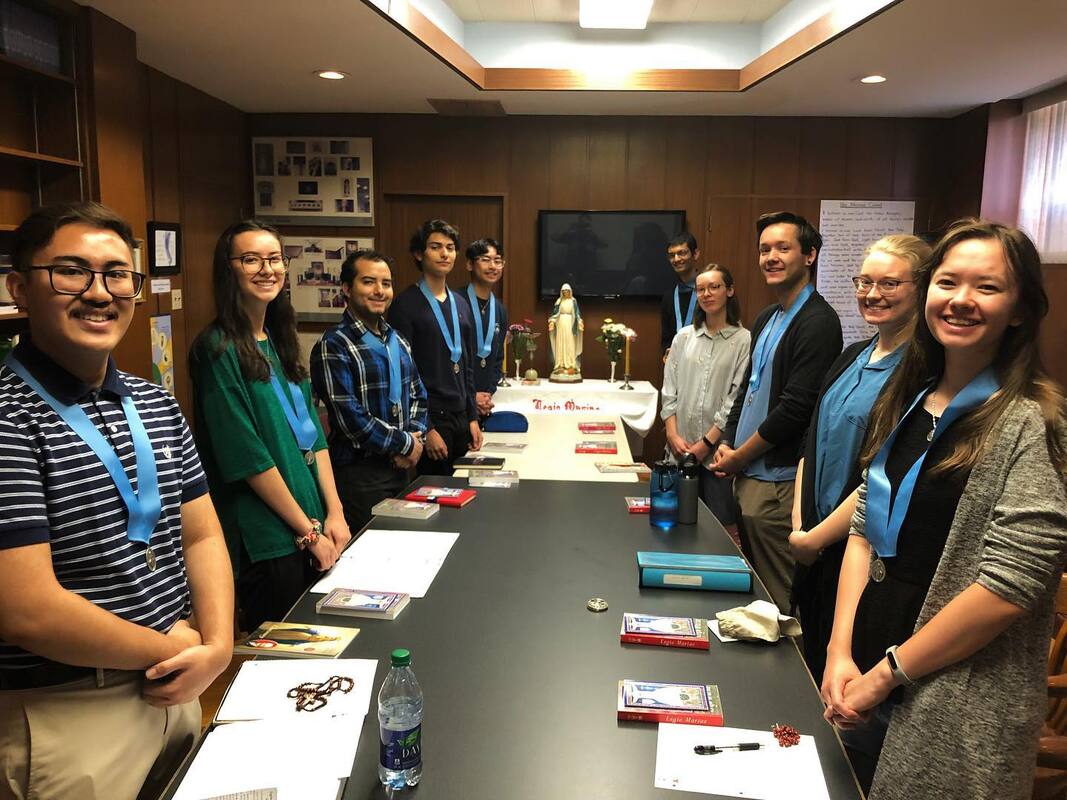
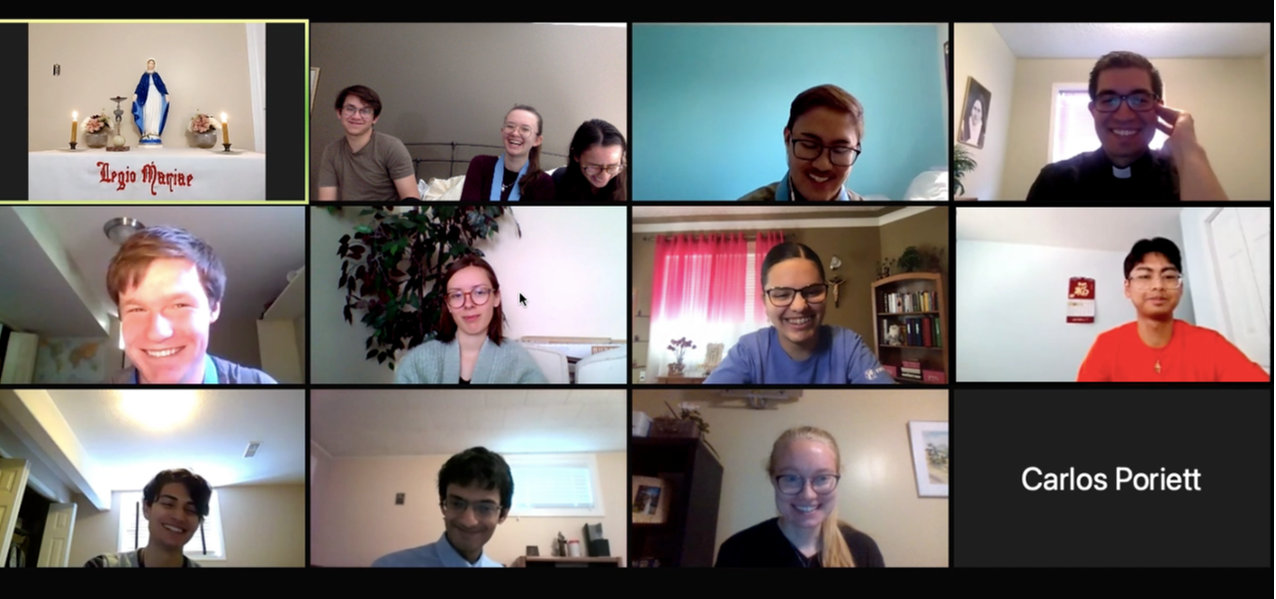
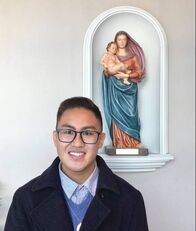
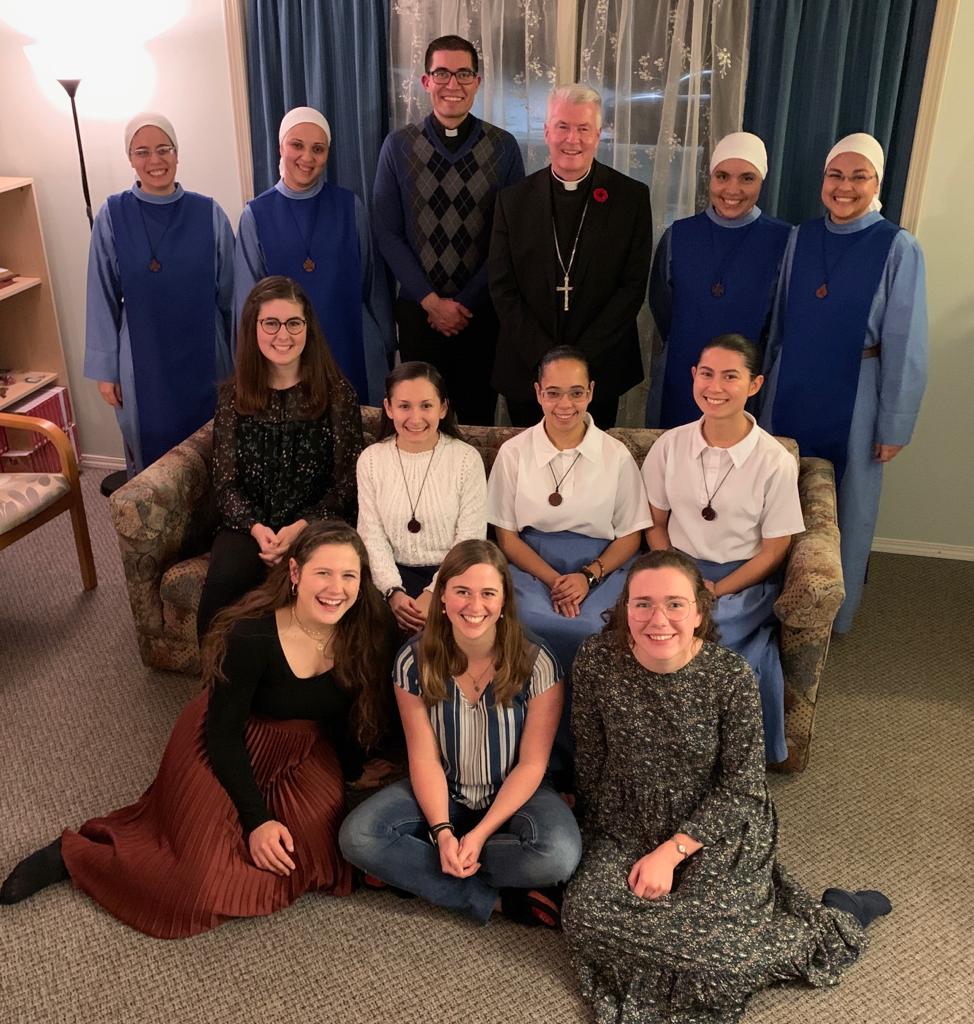
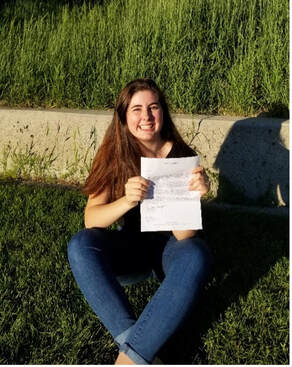
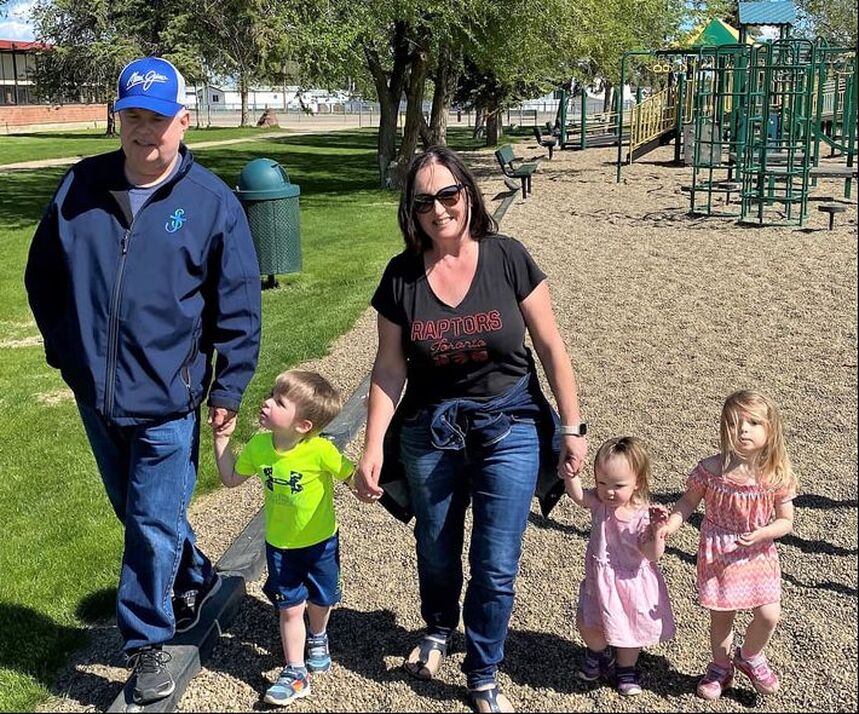
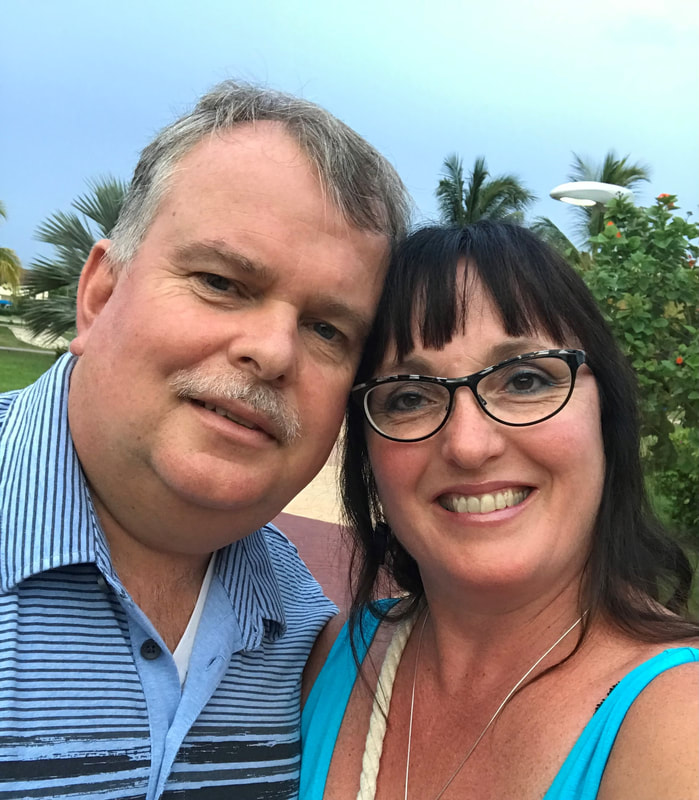
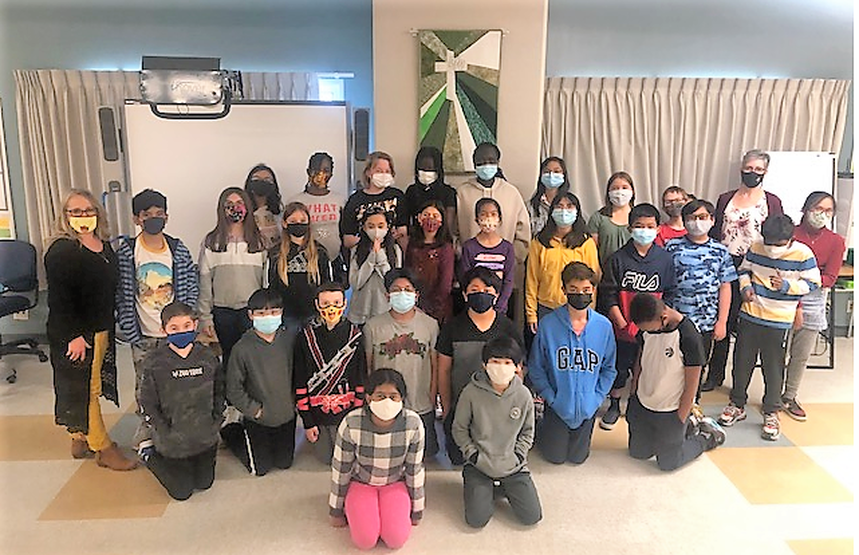
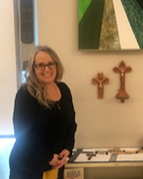
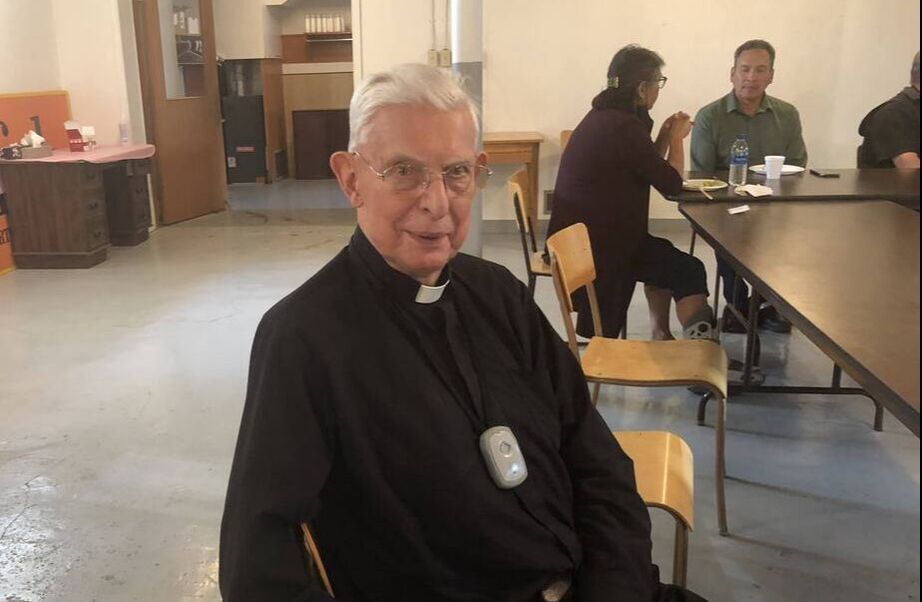
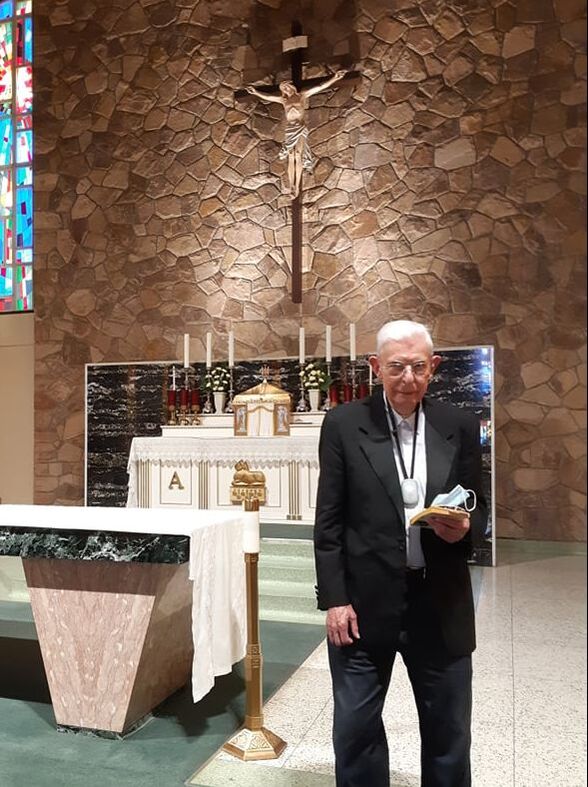
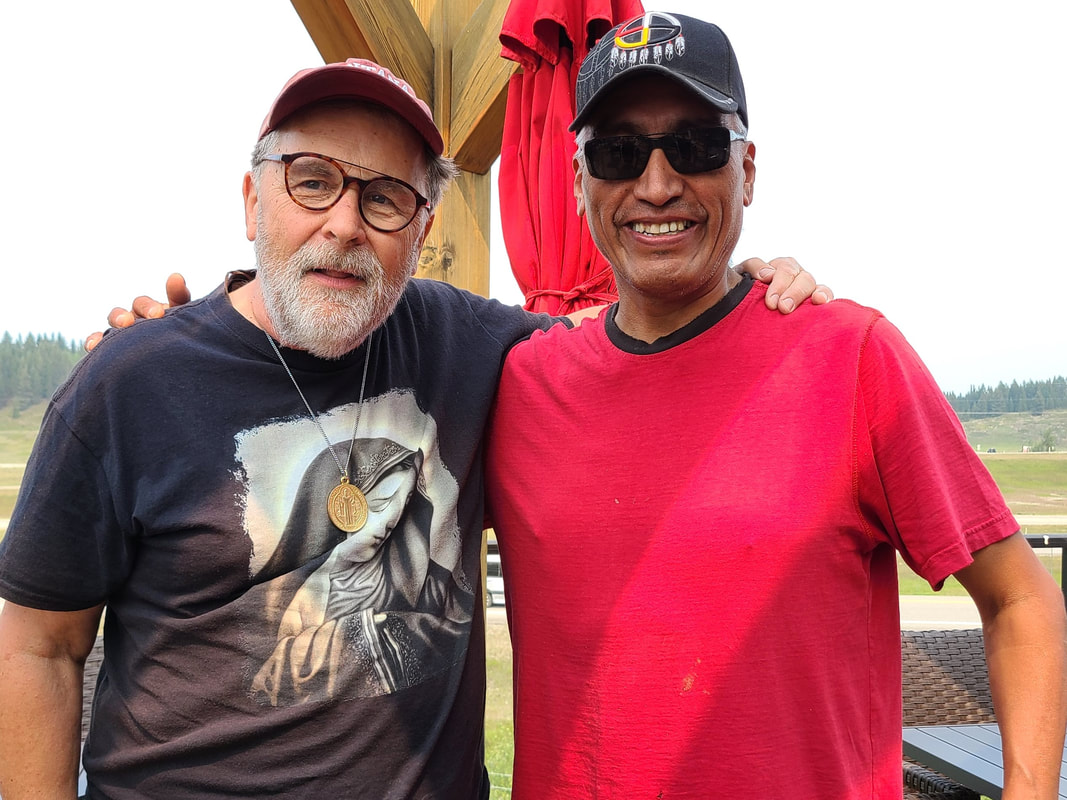
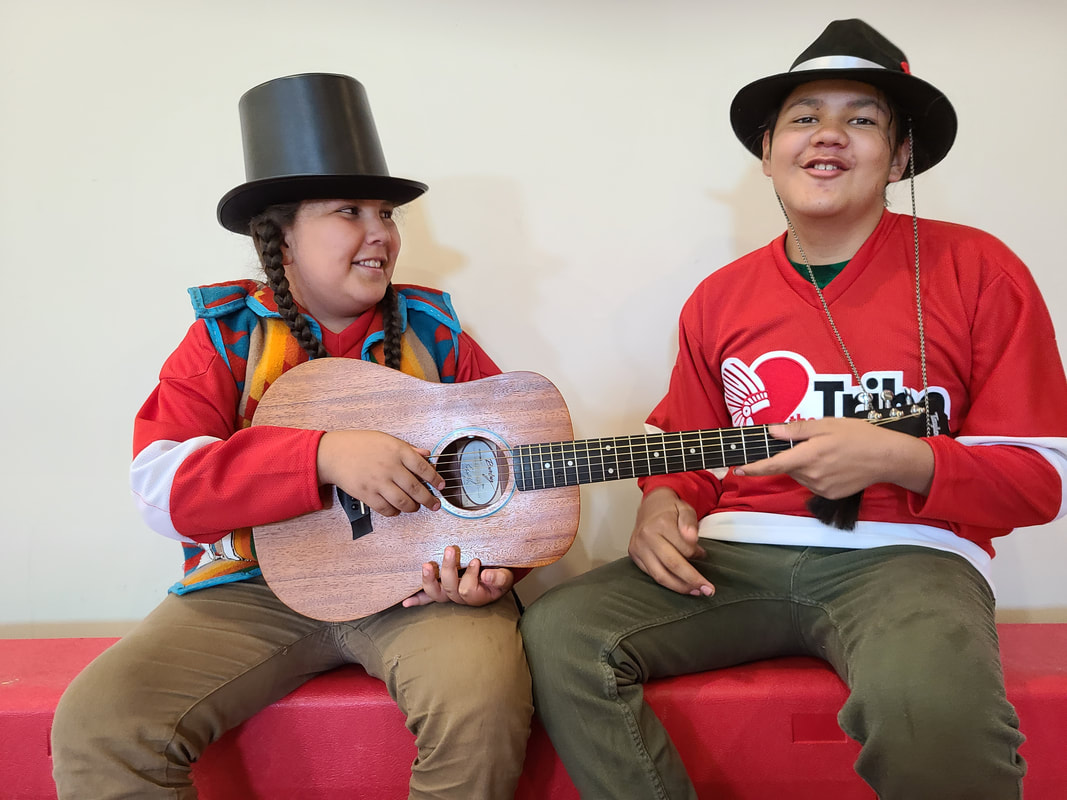

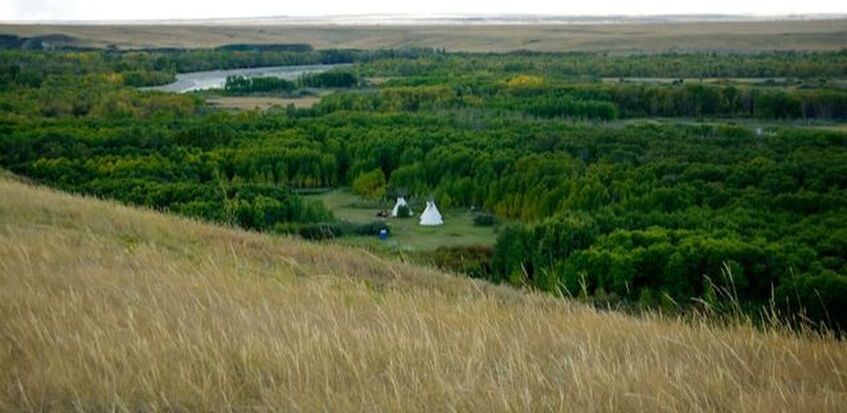
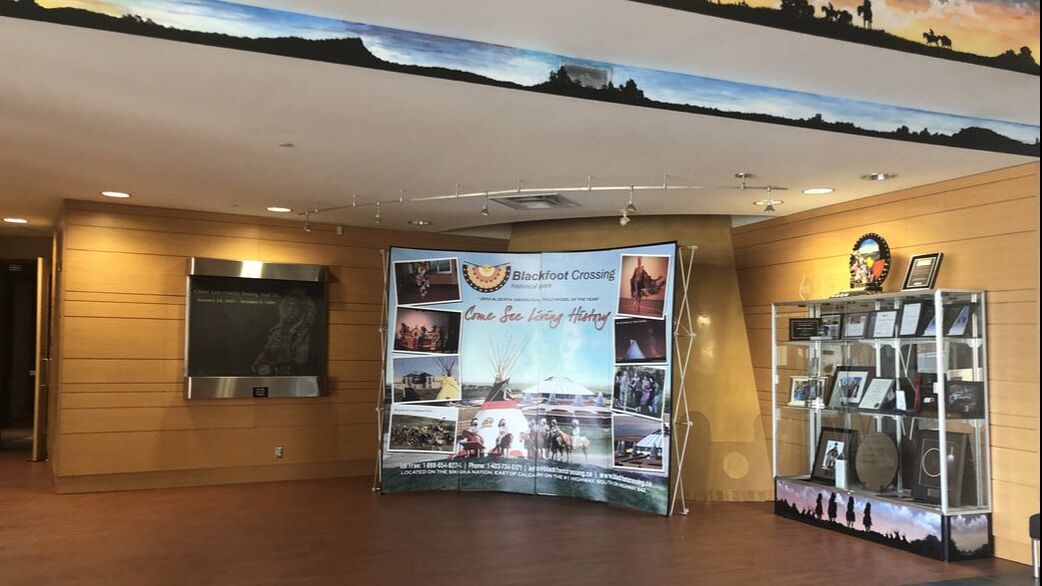
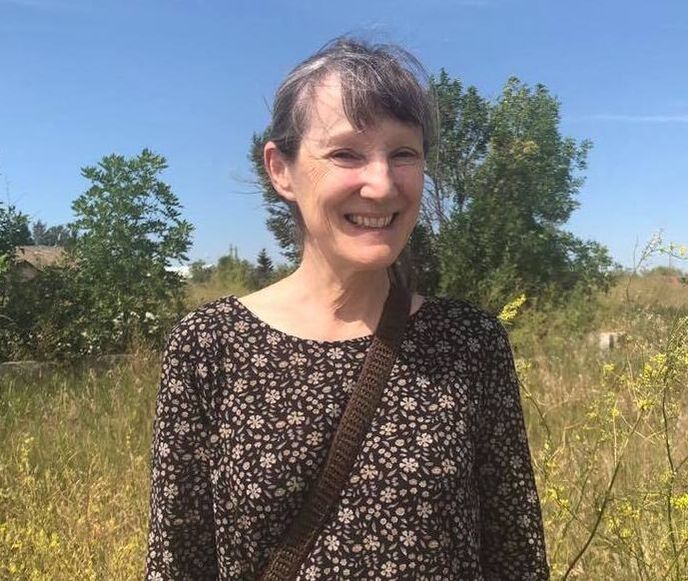
 RSS Feed
RSS Feed